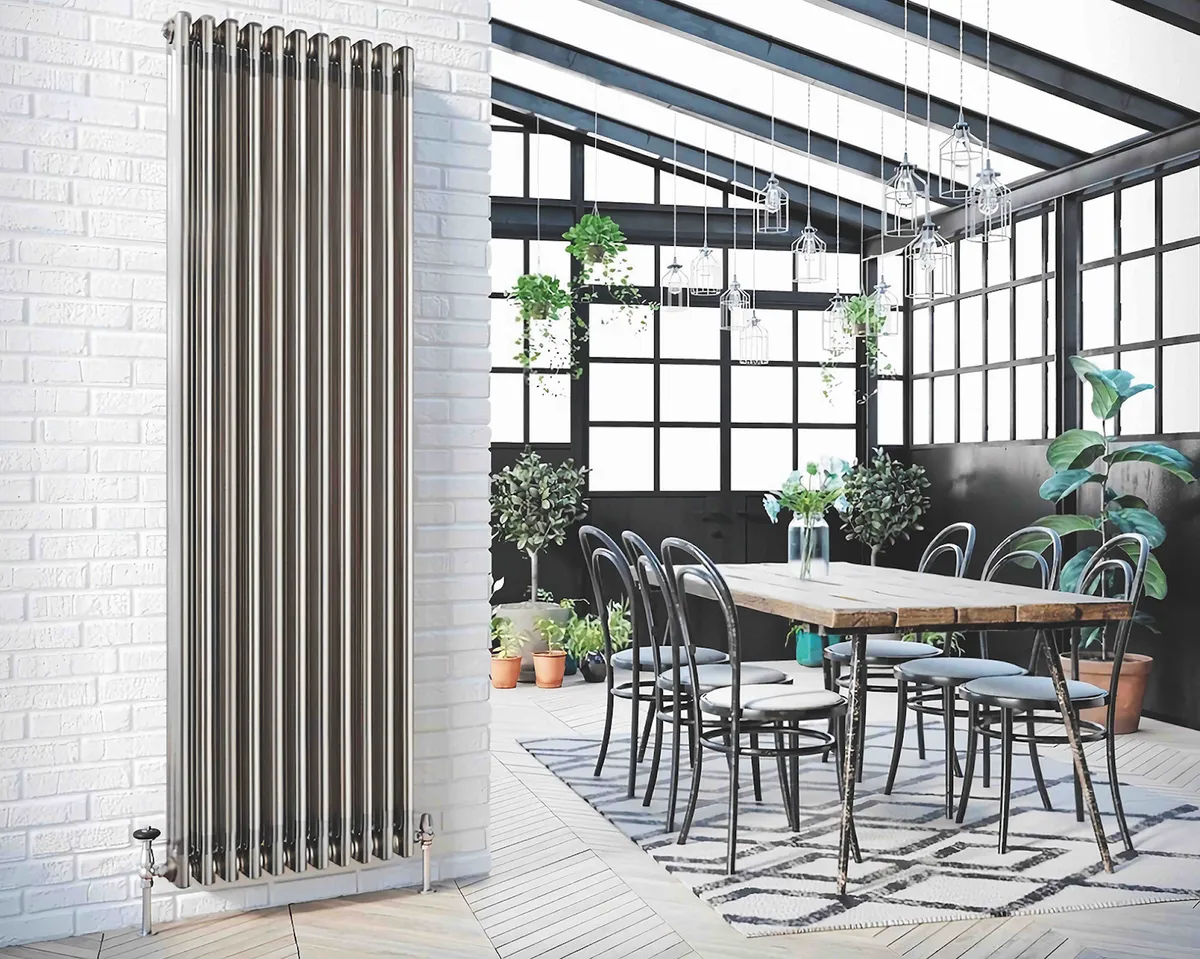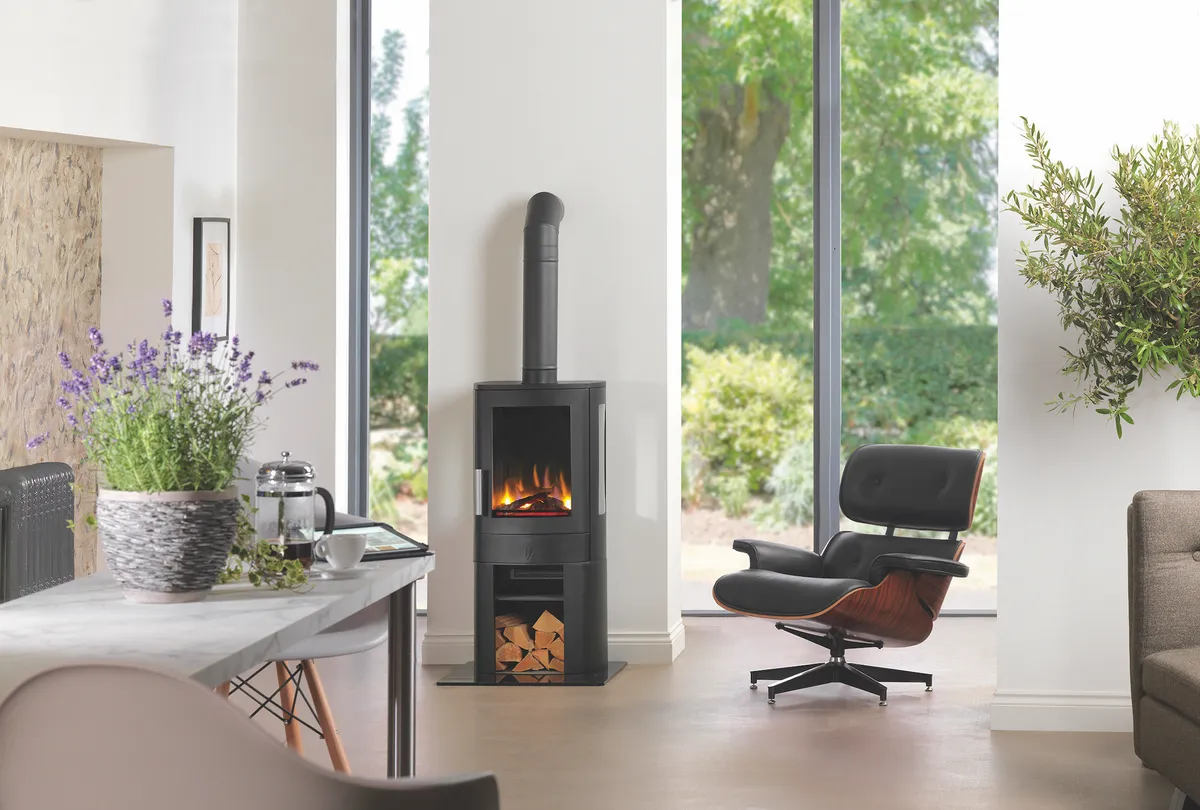Now that the weather is getting colder, there's never been a more perfect time to start thinking about how to heat your home for maximum warmth and efficiency.
To help you decide on the best option for your home, here’s our expert guide to the different heating solutions available. We've also tried-and-tested the best winter duvets, too.
Types of home heating solutions
Eco-friendly woodburners
If you’re choosing a wood-burning or multi-fuel stove, make sure it’s Ecodesign Ready. With new Clean Air legislation have come into effect in 2022, it’s vital to choose a model that complies with the new sustainable guidance. Here are some of our favourite multi-fuel stoves.

Homes within Smoke Control Areas also need a stove that is approved by the Department for Environment, Food and Rural Affairs (Defra). Find out if you live in a Smoke Control Area at gov.uk.
It's also worth noting is that a Defra-approved model isn’t necessarily Ecodesign Ready and vice versa, so it’s vital to choose a stove that’s both. Added green features to look for include the energy efficiency rating, which will also keep running costs low.
Radiators
Radiators come in all sorts of shapes, sizes and finishes, and can be used to create a style statement or to blend in and be more of a discreet heating solution.
For a classic look, consider a column design or for something more contemporary, go for an unusual shape or colour.

The benefits of radiators include heating your home to a comfortable temperature as well as being affordable and easy to install. The most efficient are aluminium, as these heat up to five times faster than mild steel or cast iron – aluminium is an easier metal to recycle too.
Thermostatic valves enable you to control the temperature of each radiator to optimise its effectiveness and heat output, which can help save on energy and gas bills.
Gas fires
Glass-fronted gas fires offer superior efficiency compared to open-fronted gas designs and you can choose from a huge range of styles, including multi-sided formats that are perfect for open-plan spaces.
They’re often available in both conventional and balanced flue versions, as well as natural gas and LPG, so they can be installed in homes with or without a chimney, as well as properties without access to mains gas.

Running costs can be cost-effective, especially if you’re on a fixed-price tariff for your gas. But bear in mind it will need regular servicing, just like a boiler, and its glass door will require cleaning.
Have it safety checked and serviced once a year by a registered gas service engineer – find one local to you at gassaferegister.co.uk.
Electric fires
Electric fires can be installed almost anywhere and are quick to heat up. They come in varied designs, everything from sleek frameless styles, corner and inset models to classic stoves for the look and feel of a wood burner – perfect for a traditional interior.
You’ll get realistic flame and log effects, mood lighting, remote control, programmable settings and customisable fuel beds so you can change the look to a crystal ice effect, for example, when you want something more contemporary.

They can also be wall- or hearth-mounted, free standing or built-in, offering a flexible heat source for any room. They don’t need a chimney and you can even find app- and voice-controlled designs for a smart heating solution.
Most designs are made to adhere to improvements in energy efficiency and only products that meet minimum Ecodesign standards can now be brought to market.
Bioethanol fires and pellet stoves
A bioethanol fire is an easy-to-use, clean, safe and eco-friendly way to enjoy a real fire. It’s not designed to be the main heating source so you’ll also need radiators or underfloor heating for the rest of the house, but it does offer a really quick and easy solution for rooms without a chimney.
To get one going you just squeeze the bioethanol fuel into the burner box and light it with an extended taper or gas-lighter tool.

There’s no smoke and it burns with 98% efficiency while leaving no unpleasant residue. Wood pellet stoves are another eco option and these can heat just one room or the whole house.
Fuelled by wood pellets, which are automatically fed into the stove, they’re extremely efficient and some models can be controlled with your smartphone so you can set it to come on at a regular time or light it remotely.
‘The initial cost of installing one is around £1,500 to £3,000,’ says Gregory Smith from priceyourjob.co.uk. ‘The running costs range from 5.2p to 8.7p per kWh. You can also benefit from the government’s renewable heat incentive payments, which will help save on energy bills.’
Infrared heating panels
These efficient panels work by turning electricity into infrared energy, which is directed at walls, floors and ceilings to warm a room. Different to convection heaters, which heat the air rather than surfaces, panels are a much more efficient way to heat a space.
They work best when you choose a size to suit the room, as if you underestimate the area you need to heat, the panel can take a while to reach target temperature. Make sure the panel isn’t obstructed by any objects and consider the running costs, which can add up if you have it on all day during the winter.

They don’t require any pipework and can be placed anywhere around the home. ‘The main advantage is that they heat up rooms quicker than other heating options, as they instantly warm objects in the space,’ says Gregory Smith from priceyourjob.co.uk. ‘They’re also low maintenance with fit and forget technology, which means they can be installed and left.
They produce 100% clean heat and cost from around £125 to £450 to buy, and around £50 a year to run.’ Infrared panels must not be obstructed as they heat the objects in the room rather than the air, so blockages absorb the heat meant for you (and they can be hot to touch).
Additional eco options
Alternative sustainable sources include solar panels and ground-source heat pumps. The benefits include having access to endless amounts of energy, free of charge, as well as no CO2 emissions.
The cost savings can be massive, as a lot less energy is used to heat water as well as the home, and you’ll be reducing your use of fossil fuels to help combat climate change.

The installation costs will be high however, and it can cause major upheaval to your décor and any existing systems. These heat methods are certainly an investment in a forever home and you can expect to pay around £6,000 to £7,000 for solar and between £14,000 and £19,000 for a heat pump according to The Energy Saving Trust.
The payback period for both is hard to estimate as it depends on how well the house is insulated and how you use the heat generated.
How to save on heating bills
• Heated air can be lost through the chimney so consider blocking it up or removing the fireplace if it’s not needed, but install a ventilation brick in the outside wall so it doesn’t fill up with condensation over time.
• Install a zoned heating system so you can control the temperature on a room-by-room basis.

• Upgrade an old boiler to a new, greener design. Not only will it run more efficiently but it will also reduce your energy costs, too.
• Position the thermostat in the best place to heat your home most efficiently. It works best when fixed to a wall about 1.5m off the ground, away from heat sources and out of direct sunlight. Some come with the option of a stand so you can pop it on a table or shelf instead.

• Replace single glazing with thermally efficient double- glazed windows or repair old, broken or condensation riddled panels.
• Get your loft properly insulated and, where suitable, exterior cavity walls filled, as a well-insulated home will retain more heat, saving energy and cutting down on bills.

• Check if you’re on the best deal when it comes to gas and electricity tariffs by logging on to uswitch.com and seeing how much you can save.
• Fill any gaps in wooden floorboards to stop draughts or cover them over with a thick rug.
Things to consider when choosing your heating solutions
Consider the fuel type available for your property – gas, electric, liquid petroleum gas (LPG), solar power, wood, pellets, bio-ethanol – and which you would prefer to use. Think about whether you want a focal point fire or stove, designer radiators or something that blends in.

Will the installation be messy, time-consuming and costly or can you replace like for like? Think about the running costs too, as well as any restrictions in your area for using the fuel of your choice.
A stove or fire must always be fitted by a qualified installer, whether HETAS approved for wood or solid fuel (hetas.co.uk) or Gas Safe for gas (gassaferegister.co.uk). You can no longer buy coal or wet wood to burn in a stove or open fire as new legislation permits only dry wood or approved smokeless fuel.

